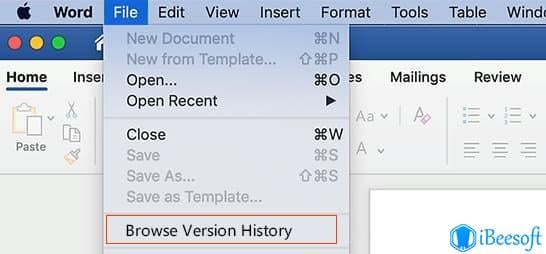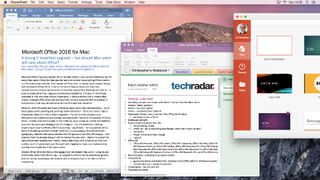Office 2016 Update History Mac

Office for Mac received Touch Bar support in an update on February 16, 2017, following the launch of the 2016 MacBook Pro models. 32-bit versions of Office for Mac won't run on macOS Catalina; therefore, version 15.25 is the earliest version of Office for Mac that will run on the latest version of macOS. Microsoft Office 2016 – October 14, 2025 Microsoft Office 2016 for Mac – October 13, 2020 Microsoft Office 2019 – October 14, 2025 Microsoft Office 2019 for Mac – October 10, 2023. Microsoft Windows. Microsoft Windows XP – April 8, 2014 Microsoft Windows Vista – April 11, 2017 Microsoft Windows 7 – January 14, 2020 Microsoft.
Microsoft has a support lifetime for each of their products. Below is a list of software that has or soon will reach its end of life and support. You should not run software that is not supported, since it may contain security issues that are not fixed and can put your computer and information at risk. Michael Spice can help you with replacement and updating to a supported version of Office, Windows and Windows Server.
Microsoft Office
Microsoft Office 2003 – April 8, 2014
Microsoft Office 2007 – October 10, 2017
Microsoft Office 2010 – October 13, 2020
Microsoft Office 2011 for Mac – October 10, 2017
Microsoft Office 2013 – April 11, 2023
Microsoft Office 2016 – October 14, 2025
Microsoft Office 2016 for Mac – October 13, 2020
Microsoft Office 2019 – October 14, 2025
Microsoft Office 2019 for Mac – October 10, 2023
Microsoft Windows
Check For Updates Office 2016
Microsoft Windows XP – April 8, 2014
Microsoft Windows Vista – April 11, 2017
Microsoft Windows 7 – January 14, 2020
Microsoft Windows 8 – January 12, 2016 users must upgrade to Windows 8.1
Microsoft Windows 8.1 – January 10, 2023
Microsoft Windows 10 release 1507 from July 2015 – May 9, 2017
Microsoft Windows 10 release 1511 from November 2015 – October 10, 2017
Microsoft Windows 10 release 1607 – April 10, 2018
Microsoft Windows 10 release 1703 – October 9, 2018
Microsoft Windows 10 release 1709 – April 9, 2019 (October 13, 2020 – Enterprise and Education version)
Microsoft Windows 10 release 1803 – November 12, 2019 (May 11, 2021 – Enterprise and Education version)
Microsoft Windows 10 release 1809 – November 10, 2020 ( May 11, 2021 – Enterprise and Education version)
Microsoft Windows 10 release 1903 – December 8, 2020
Microsoft Windows 10 release 1909 – May 11, 2021 (May 10, 2022 – Enterprise and Education version)
Microsoft Windows 10 release 2004 – December 14, 2021
Microsoft Windows 10 release 20H2 – May 10, 2022

Microsoft Edge Legacy and Internet Explorer
Microsoft Edge Legacy Edition that came with Windows 10 – March 9, 2021
Microsoft Internet Explorer – August 17, 2021
Microsoft Windows Server
Microsoft Windows Server 2003 – July 14, 2015
Microsoft Windows Server 2003 R2 – July 14, 2015
Microsoft Windows Server 2008 – January 14, 2020
Microsoft Windows Server 2008 R2 – January 14, 2020
Microsoft Windows Server 2012 – October 10, 2023
Microsoft Windows Server 2012 R2 – October 10, 2023
Microsoft Windows Server 2016 – January 12, 2027
Microsoft Windows Server 2019 – January 9, 2029
Microsoft Exchange Server
Microsoft Exchange Server 2003 – April 8, 2014
Microsoft Exchange Server 2007 – April 11, 2017
Microsoft Exchange Server 2010 – October 13, 2020
Microsoft Exchange Server 2013 – April 11, 2023
Microsoft Exchange Server 2016 – October 14, 2025
Microsoft Exchange Server 2019 – October 14, 2025
Microsoft SQL Server

Microsoft SQL Server 2005 – April 12, 2016
Microsoft SQL Server 2008 – July 9, 2019
Microsoft SQL Server 2012 – July 12, 2022
Microsoft SQL Server 2014 – July 9, 2024
Microsoft SQL Server 2016 – July 14, 2026
Microsoft SQL Server 2017 – October 12, 2027
Microsoft SQL Server 2019 – January 8, 2030
UPDATE JANUARY 2020: SOLVED: Setup Office365ProPlus To Using Windows 10 Delivery Optimization
____________
There are three ways to patch Office 2016 from Office365 :
- Automatically from Microsoft through their “Content Delivery Network” (default)
- Using a distribution point that you update periodically
- Using System Center that pulls its updates from the Microsoft Content Network
What you can’t do is control Office365 updates through WSUS. Wait a minute, you say you saw a WSUS category named OFFICE365 CLIENT and the research says that it is the Office 2016 updates. That is true, but shockingly it does not work in WSUS. That category was added for System Center:
…Deploying these updates without Configuration Manager is not supported, so the content described above is essentially useless to a WSUS standalone administrator… we recommend that you… deselect the Office 365 Client product so that WSUS does not sync this content from Microsoft Update…
…There are no plans to support this via WSUS standalone at this time. My preference would be to support this scenario without the use of this workaround, which is not possible with the current implementation.
Also, how can it be that Windows Update does not handle the updates for Office365 versions of Office 2016? Windows Update does not push updates to Click to Run software which is what Office 365 Office 2016 is. Click-to-Run is a Microsoft technology that virtualizes programs (like a Virtual Machine, but a Virtual App). For more information on Click to Run, read THIS.
I confirmed with Microsoft Partner Support that WSUS can be used for all other updates while SCCM handles just the Office 365 Office 2016 updates. This scenario plays out in many branch offices. See the post for more details.

You might also think, ‘hey, how large can Office 2016 updated be?’ Large enough to bog down your network. See this post for specific sizes.
Lets quickly go through each of the three Office 2016 update options for Office 2016:
AUTOMATIC UPDATE OFFICE365 Office 2016 THROUGH THE MICROSOFT CONTENT NETWORK
If you have Office365 Office 2016 in your company and you have not made changes to the default configuration, you are not controlling the Office 2016 patches. Office 2016 (and 2013) will periodically check for Windows Updates and silently install them automatically weather you want them to or not:
…Click-to-Run products are configured to be updated automatically over time. Users don’t have to download or install updates. The Click-to-Run product seamlessly updates itself in the background…
https://technet.microsoft.com/en-us/library/jj219427.aspx
UPDATE OFFICE365 Office 2016 FROM A DISTRIBUTION POINT
You can use the command line Office Deployment Tool to download updates to a network share and then use one of two ways to tell you Office 365 Office 2016 (and 2013) clients where to source them from:
- GPO: COMPUTER CONFIGURATION > POLICIES > ADMIN TEMPLATES > MICROSOFT OFFICE 2016 (MACHINE) > UPDATES > UPDATE PATH
- During the install of your Office365 Office 2016 you can set the updates share in the “configuration.XML” file you use.
…
<Updates Enabled=”TRUE” Channel=”Current” UpdatePath=”<Server><ShareThatContainsUpdates>” />
…
See THIS Partner Post for more detail.
UPDATE OFFICE365 Office 2016 FROM SYSTEM CENTER CONFIGURATION MANAGER
In this scenario, you simply need to go through three steps
- Create and apply the following GPO:
COMPUTER CONFIGURATION > ADMIN TEMPLATES > MICROSOFT OFFICE 2016 (MACHINE) > UPDATES > OFFICE 365 CLIENT MANAGEMENT = ENABLED - In SCCM go to ADMINISTRATION > OVERVIEW > SITE CONFIGURATION > SITES > CONFIGURE SITE COMPONENTS (this is a button at the top) > SOFWARE UPDATE POINT
- > CLASSIFICATION (tab) enable UPDATES
- > PRODUCTS (tab) enable both OFFICE365 CLIENT and OFFICE 2016
- In SCCM go to SOFTWARE LIBRARY > OVERVIEW > SOFTWARE UPDATES > ALL SOFTWARE UPDATES and set the deployment you want
Office Version History For Mac
This short video from Microsoft does an excellent job of explaining these instructions:
Office Version History
You may find the following referencing handy: